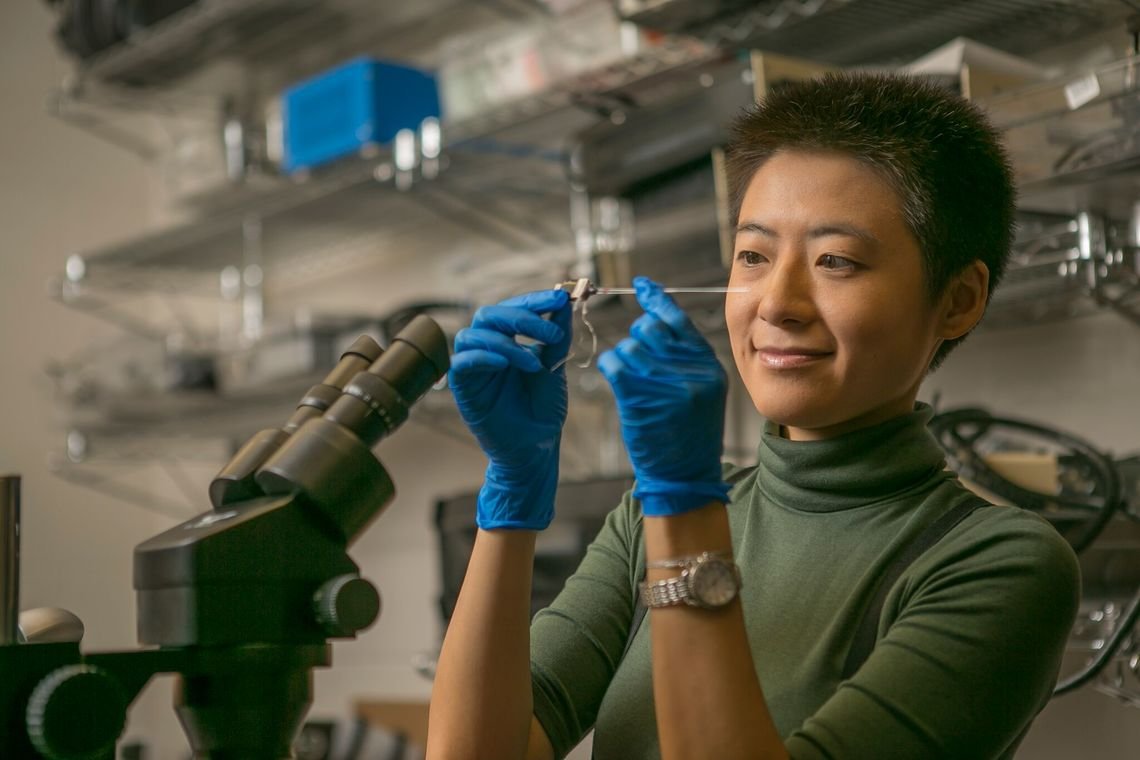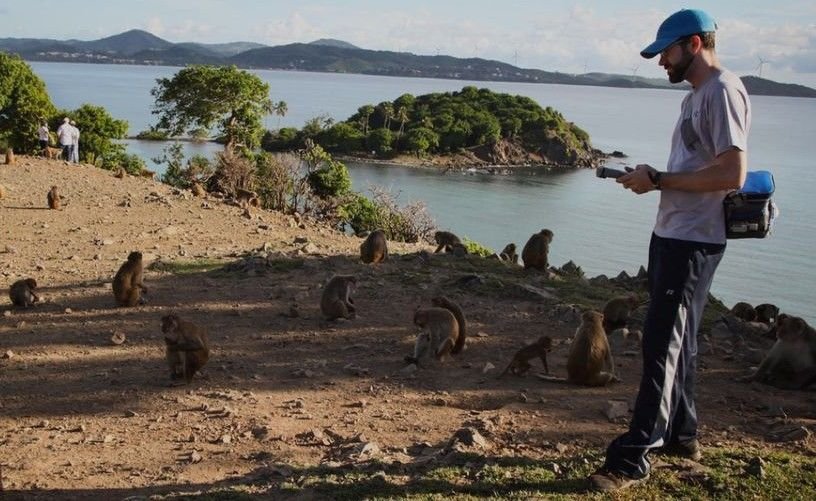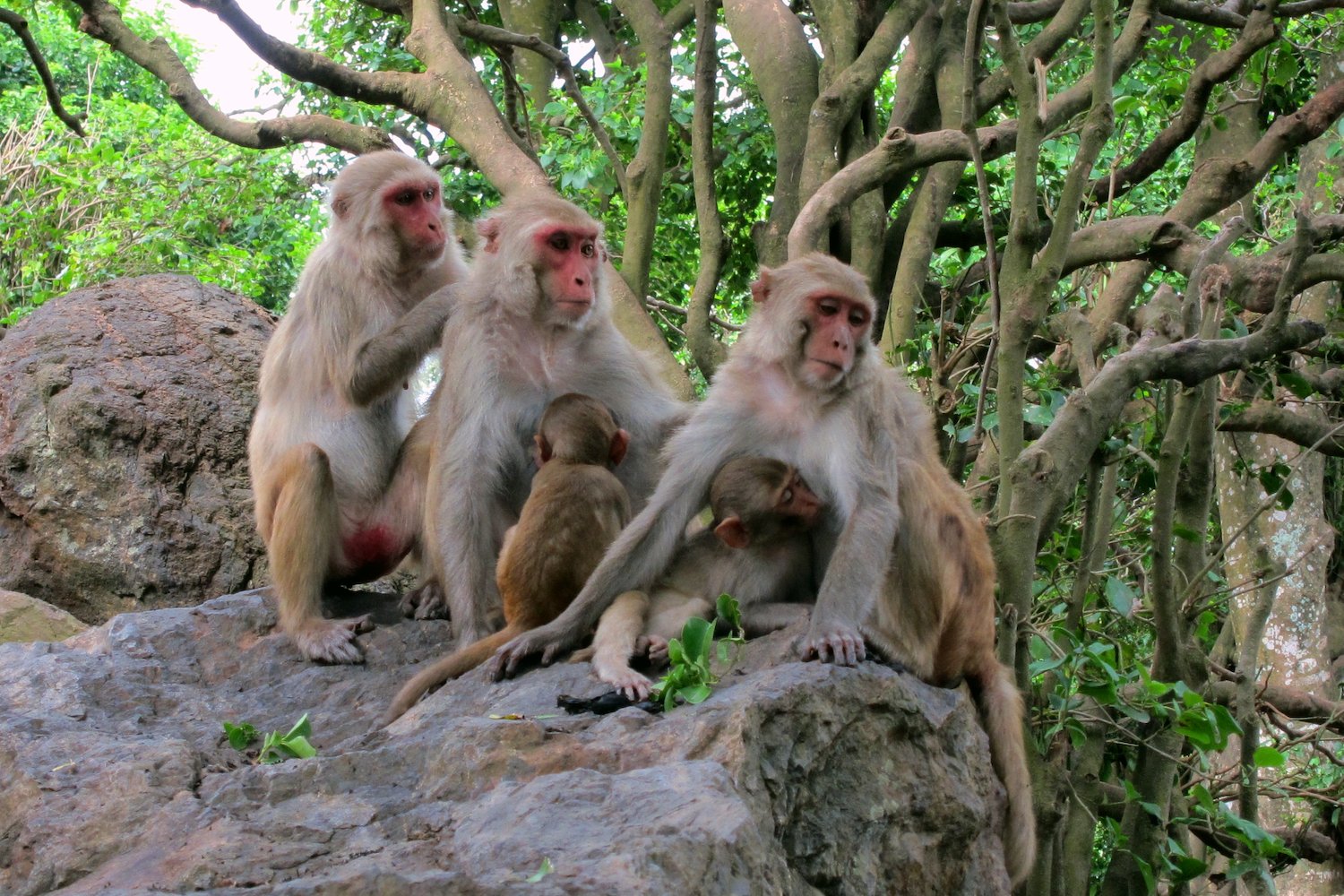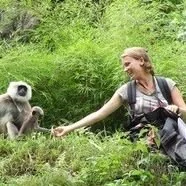
Our goal is to ask
BIG questions.
Our Philosophy
We hope the answers will help us improve health and well-being, enhance business, and build a better society.
Our lab tries to understand how the brain makes decisions and motivates behavior. We are interested in why different people make different kinds of decisions. And we are keen to know why people sometimes make very similar, and sometimes very different, decisions than animals.
Our work is motivated by ethology, evolutionary biology, and economics, with a focus on how specific features of the physical and social environment have shaped the biological mechanisms that help us make decisions.
We are especially interested in the processes that allow people and other animals to make decisions when the environment is ambiguous or complicated by the presence of other individuals.
We use an array of techniques, including psychophysics, intracranial recordings, brain stimulation, pharmacology, eye tracking, pupillometry, brain imaging, genomics, and epigenomics to answer these questions.
An important goal is to translate some of these techniques into wearable devices that will allow us to take neuroscience into both natural and consumer environments.
Our Work
Research in the Platt Labs is incredibly diverse. The backgrounds of our team members range from biology and psychology to marketing and physics. And we use a wide range of techniques including behavioral analysis, eye-tracking, brain imaging, genomics, brain recordings and stimulation, and pharmacology.
The roots of human behavior extend deep into our past.
Our research combines intensive field observations of monkey social behaviors with cutting-edge genomics, proteomics, and epigenomics techniques to produce an unprecedented data set of genes, brain gene expression and epigenomics, and behavioral patterns. This work allows us to discover how genes and the environment interact to shape the structure and function of brain circuits that ultimately drive behavior.
Understanding how we decide will help us make better decisions.
Although we may be unaware of it, our brains are constantly weighing possible options and predicting potential outcomes as we navigate through the complex world around us. Decision making has an evolutionary history. Animals, like humans, must make complex decisions in order to achieve biological success. Understanding the brain systems and circuits that motivate decisions in nonhuman animals helps us better understand how our own brains make good decisions - or bad ones - and how to make better decisions in the future.
We are social creatures.
The activity in our brains looks different when we choose to act selfishly compared to when we help others, when we see familiar versus unfamiliar faces, and when we decide to cooperate rather than compete. We are using genomics, neuroscience, economics and evolutionary biology to better understand the mechanisms that promote or disrupt adaptive social behavior. By characterizing the social brain, we hope to maximize our ability to form meaningful connections with others.
From earliest infancy, humans are explorers.
The innate drive to explore and learn is deeply rooted in the biology and evolutionary history of our brains. Monkeys and other primates with which we share common evolutionary ancestry also share this active curiosity and ability to learn. For them, like us, these are invaluable tools for navigating complex environments and societies.
We are dedicated to improving the human condition.
We utilize the most innovative technologies to understand the brain mechanisms driving social or mental disorders. Our methods are grounded in genetics, pharmacology, neurobiology, and economics using a trans-species, holistic approach. We aim to translate this knowledge into improvements in the quality of life of people with conditions such as autism, addiction, depression, and ADHD.
We are maximizing human potential in the workplace.
We not only want to help businesses make great hiring decisions, but we also want to help them create a supportive environment in which people can thrive. We are exploring novel ways to incorporate genomics, neurobiology, and even game theory to help characterize and improve group intellegence.
Our Team
Featured Publications
Why Deaths of Despair Are Increasing in the US and Not Other Industrial Nations—Insights From Neuroscience and Anthropology | February 2, 2022
The US National Academy of Sciences reports rising mortality for US adults, most steeply for White adults with a secondary education or less. The rise is largely attributable to deaths of despair (suicide and poisoning by alcohol and drugs) with strong contributions from the cardiovascular effects of rising obesity. Although the report does acknowledge a crisis, it proposes mild measures to manage it, such as strengthening programs to support recovery, prevent relapse, increase resilience, and perform more research toward clinically useful definitions of despair. The US National Academy of Sciences report notes that mortality is decreasing in a control group of 16 wealthy nations (including countries in Western Europe, Canada, Australia, and Japan), but it does not ask what protects those nations from despair. It has been observed that human beings are constrained by evolutionary strategy (ie, huge brain, prolonged physical and emotional dependence, education beyond adolescence for professional skills, and extended adult learning) to require communal support at all stages of the life cycle. Without support, difficulties accumulate until there seems to be no way forward. The 16 wealthy nations provide communal assistance at every stage, thus facilitating diverse paths forward and protecting individuals and families from despair. The US could solve its health crisis by adopting the best practices of the 16-nation control group.
A Pilot Randomized Clinical Trial of Intranasal Oxytocin to Promote Weight Loss in Individuals With Hypothalamic Obesity | March 17, 2023
Context: Hypothalamic obesity is a rare, treatment-resistant form of obesity. In preliminary studies, the hypothalamic hormone oxytocin (OXT) has shown promise as a potential weight loss therapy.
Objective: To determine whether 8 weeks of intranasal OXT (vs 8 weeks of placebo) promotes weight loss in children, adolescents, and young adults with hypothalamic obesity.
Methods: This randomized, double-blind, placebo-controlled, crossover pilot trial (NCT02849743), conducted at an outpatient academic medical center, included patients aged 10 to 35 years with hypothalamic obesity from hypothalamic/pituitary tumors. Participants received intranasal OXT (Syntocinon, 40 USP units/mL, 4 IU/spray) vs excipient-matched placebo, 16 to 24 IU 3 times daily at mealtimes. Weight loss attributable to OXT vs placebo and safety (adverse events) were assessed.
Results: Of 13 individuals randomized (54% female, 31% pre-pubertal, median age 15.3 years, IQR 13.3-20.6), 10 completed the entire study. We observed a nonsignificant within-subject weight change of −0.6 kg (95% CI: −2.7, 1.5) attributable to OXT vs placebo. A subset (2/18 screened, 5/13 randomized) had prolonged QTc interval on electrocardiography prior to screening and/or in both treatment conditions. Overall, OXT was well-tolerated, and adverse events (epistaxis and nasal irritation, headache, nausea/vomiting, and changes in heart rate, blood pressure, and QTc interval) were similar between OXT and placebo. In exploratory analyses, benefits of OXT for anxiety and impulsivity were observed.
Conclusion: In this pilot study in hypothalamic obesity, we did not detect a significant impact of intranasal OXT on body weight. OXT was well-tolerated, so future larger studies could examine different dosing, combination therapies, and potential psychosocial benefits.
Ageing in a collective: the impact of ageing individuals on social network structure | April 10, 2023
Ageing affects many phenotypic traits, but its consequences for social behaviour have only recently become apparent. Social networks emerge from associations between individuals. The changes in sociality that occur as individuals get older are thus likely to impact network structure, yet this remains unstudied. Here we use empirical data from free-ranging rhesus macaques and an agent-based model to test how age-based changes in social behaviour feed up to influence: (i) an individual’s level of indirect connectedness in their network and (ii) overall patterns of network structure. Our empirical analyses revealed that female macaques became less indirectly connected as they aged for some, but not for all network measures examined. This suggests that indirect connectivity is affected by ageing, and that ageing animals can remain well integrated in some social contexts. Surprisingly, we did not find evidence for a relationship between age distribution and the structure of female macaque networks. We used an agent-based model to gain further understanding of the link between age-based differences in sociality and global network structure, and under which circumstances global effects may be detectable. Overall, our results suggest a potentially important and underappreciated role of age in the structure and function of animal collectives, which warrants further investigation. This article is part of a discussion meeting issue ‘Collective behaviour through time.
How celebrity status and gaze direction in ads drive visual attention to shape consumer decisions | April 2023
Marketers have long used celebrity endorsement to help viewers build strong brand‐product associations. Celebrity endorsements increase brand awareness and recall, but how celebrity endorsements shape the decision process remains unclear. A wealth of research indicates that people tend to follow someone else's gaze, yet its effects in advertisements have been largely unexplored. We recruited 77 participants to investigate the effect of celebrities and gaze‐cueing in advertisements on both gaze behavior and binary choices. We combined computational modeling with eye‐tracking and pupillometry to identify which internal components of processing are affected by celebrity endorsement. We found that gaze‐cueing and celebrity endorsement influence gaze allocation and option selection. Further, results from computational modeling, eye‐tracking, and pupillometry revealed that the effect of celebrity endorsement on decisions can be explained as an offset in thestarting point of an evidence accumulation process as well as changes in the rate ofaccumulation, thereby biasing choice.
Communication style drives emergent leadership attribution in virtual teams | March 23, 2023
Leader selection plays a key role in how human social groups are formed and maintained. Leadership is either assigned through formal processes within an organization, or emerges informally through interactions with other group members–particularly in novel contexts. COVID-19 has accelerated the adoption of virtual meetings and more flexible team structures. However our understanding of how assigned leadership influences subsequent leadership emergence in virtual settings is limited. Here we examine the relationship between assigned leadership within an existing organization and subsequent emergent leadership attributions as members engage in virtual interactions. To do so, we created and implemented a novel virtual group decision-making task designed to support quantification of a more comprehensive set of communication style elements, such as speech dynamics and facial expressions, as well as task behaviors. Sixteen members of a real world organization engaged four repeated rounds of a group decision making task with new team members each time. We found participants made novel attributions of emergent leadership rather than relying solely on existing assigned leadership. While assigned leadership did influence leadership attributions, communication style, including amount of speech but also variability in facial expressions, played a larger role. The behavior of these novel emergent leaders was also more consistent with expectations of leadership behavior: they spoke earlier, more often, and focused more on the correct decision than did assigned leaders. These findings suggest that, even within existing social networks, virtual contexts promote flexible group structures that depend more on communication style and task performance than assigned leadership.
Neuronal mechanisms of dynamic strategic competition | March 20, 2023
Competitive social interactions, as in chess or poker, often involve multiple moves and countermoves deployed tactically within a broader strategic plan. Such maneuvers are supported by mentalizing or theory-of-mind—reasoning about the beliefs, plans, and goals of an opponent. The neuronal mechanisms underlying strategic competition remain largely unknown. To address this gap, we studied humans and monkeys playing a virtual soccer game featuring continuous competitive interactions. Humans and monkeys deployed similar tactics within broadly identical strategies, which featured unpredictable trajectories and precise timing for kickers, and responsiveness to opponents for goalies. We used Gaussian Process (GP) classification to decompose continuous gameplay into a series of discrete decisions predicated on the evolving states of self and opponent. We extracted relevant model parameters as regressors for neuronal activity in macaque mid-superior temporal sulcus (mSTS), the putative homolog of human temporo-parietal junction (TPJ), an area selectively engaged during strategic social interactions. We discovered two spatially-segregated populations of mSTS neurons that signaled actions of self and opponent, sensitivities to state changes, and previous and current trial outcomes. Inactivating mSTS reduced kicker unpredictability and impaired goalie responsiveness. These findings demonstrate mSTS neurons multiplex information about the current states of self and opponent as well as history of previous interactions to support ongoing strategic competition, consistent with hemodynamic activity found in human TPJ.





















